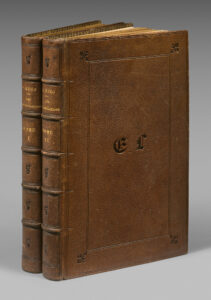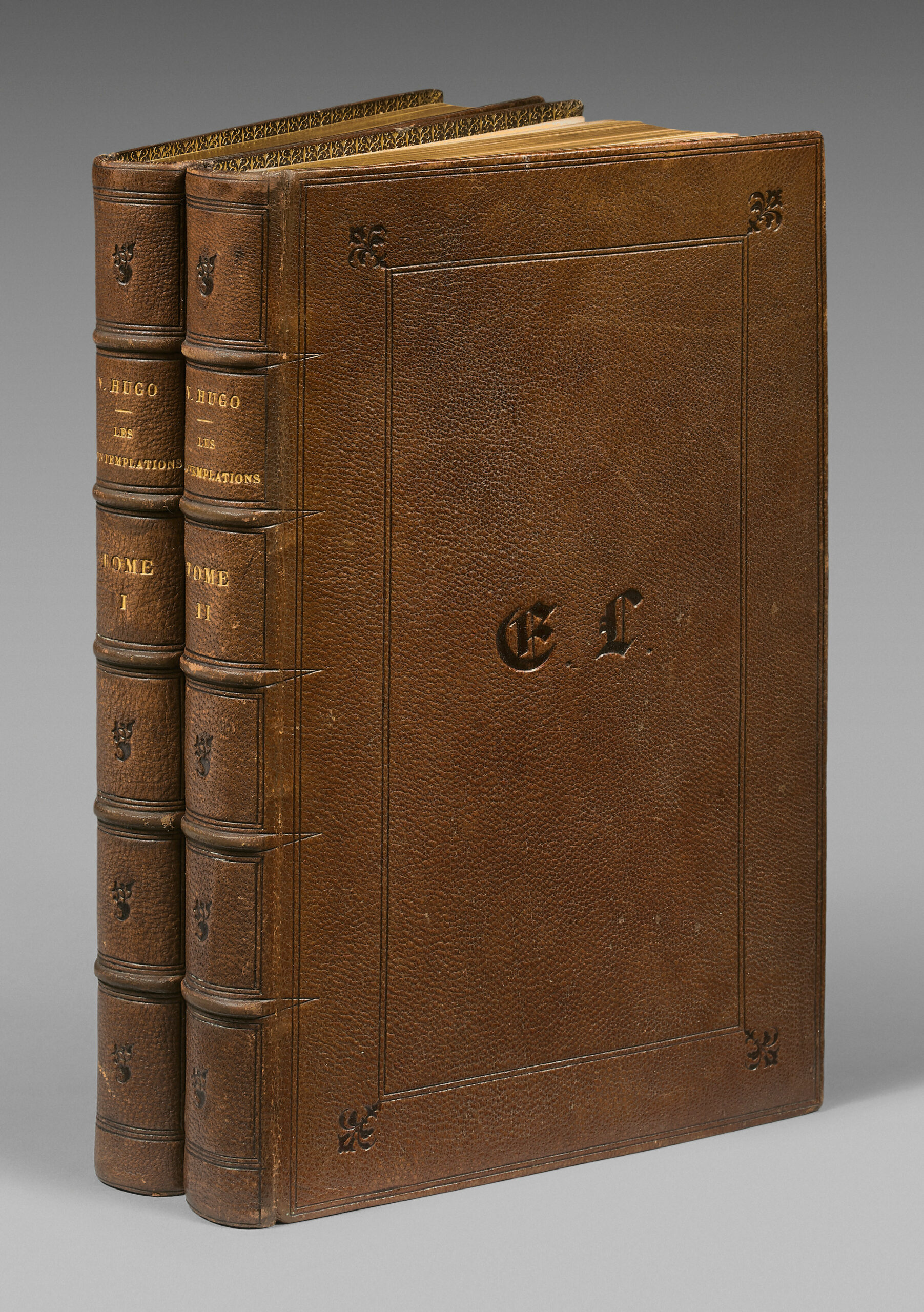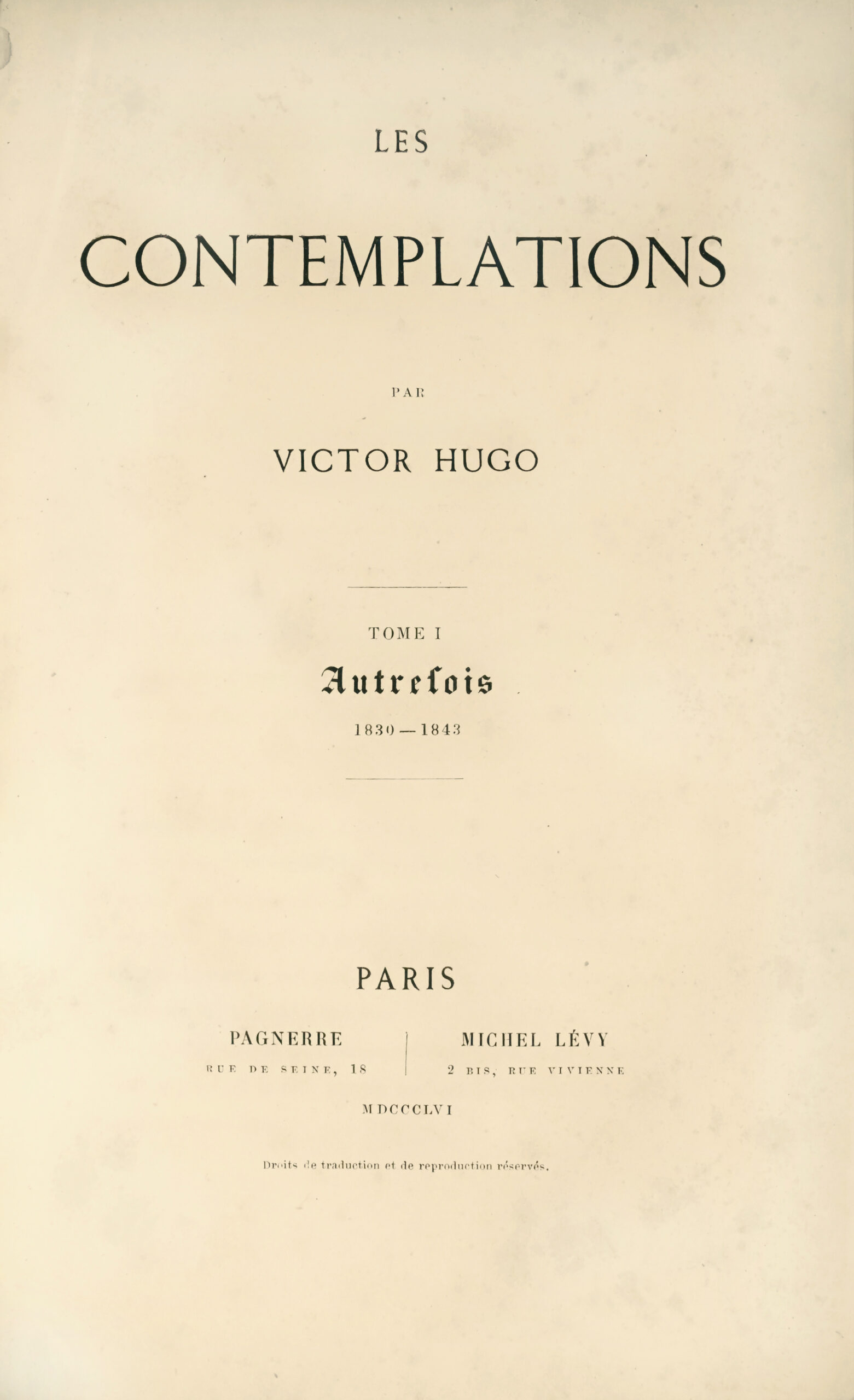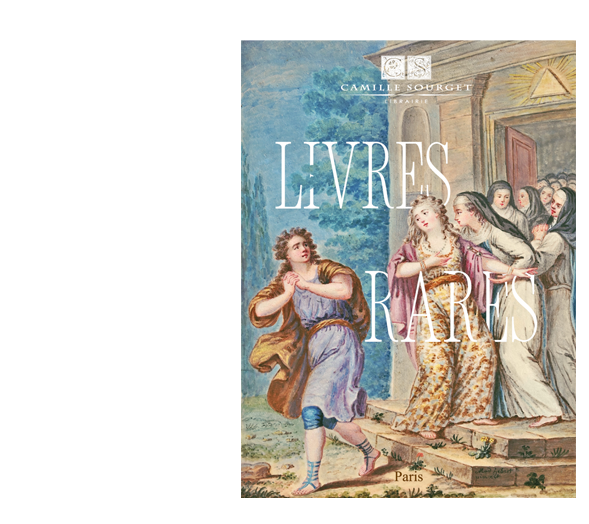Paris, Pagnerre, Michel Lévy, 1856.
2 volumes 8vo of : I/ (2) ll., 359 pp; II/ (2) ll., 408 pp., small marginal tear p. 357 of vol. 1 without loss, tiny paper loss in white margin on p. 315 of vol. II. Full brown morocco, blind-stamped fillets “à la Duseuil” on the covers, blind-stamped initials in the centre of the covers, decorated ribbed spine, gilt inner border, gilt edges, slight foxing. Full contemporary binding.
223 x 140 mm.
First edition of “Contemplations”, “an important book” (Clouzot, 149).
Carteret, I, 416-418.
“First edition printed in 3,000 copies“. (Clouzot, 149).
“The ‘Contemplations’ appeared simultaneously in Paris, Brussels and Leipzig. The true first edition is really the French one”. (Carteret).
It is with La Légende des siècles the author’s masterpiece of poetry.
Published in 1856, well after Les Feuilles d’automne, Les Chants du crépuscule, Les Voix intérieures and Les Rayons et les Ombres (which date back to the period 1830-1840), the work nevertheless bears many similarities to them. It takes up and develops identical themes, but with greater mastery and with that fierce energy that the poet acquired in his solitary exile in Jersey. We find there the subjects dear to Hugo: marvelous visions of nature, love poems, dialogues with men or things, memories of childhood and youth. Many of the poems are still famous: “Le Firmament est plein de la vaste clarté“, “La Vie aux champs“, “Vere novo“, “A Granville“, “Vieille chanson du jeune temps“, “Paroles dans l’ombre“, “La Source“… This is Hugo’s at its best; not to be missed is the splendid poem inspired by the death of his daughter: “A Villequier“. This is also where we will find the famous Réponse à un acte d’accusation, in which he defines his position as a Romantic poet. The poems are now more carefully drawn, the images are no longer blurred and acquire a remarkable precision; one can guess that the poet has benefited from the example of his former disciples: Gautier – see Emaux et Camées, Théodore de Banville and Leconte de Lisle – see Odes funambulesques and Poèmes antiques.
But what is most characteristic is that the author abandons himself to the magic of the word and tends more and more to divinize his art, to consider as authentic revelations of the supreme truth the maxims and images that were born, innumerable, from the fire of his inspiration.
“The ‘Contemplations’ see the maturity of the man, the thinker and the artist blossom“. (Lagarde et Michard, 19th century).
“This important book is found… very exceptionally in full contemporary binding, as is the case with the present copy”. (M. Clouzot).
” ‘Les Contemplations’ is an original and powerful literary monument; it is the first attempt to elevate poetry to the rank of religion, to make inspiration a means of reaching, in an absolute way, the supreme truths that mere reason cannot grasp.
Rimbaud rightly called Hugo ‘the first of the Seers’. Finally, all of surrealism can recognize in him, through his brilliant and vigorous art, its first initiator and its first master“. (Guy Schoeller).
Precious copy “very exceptionally found in full contemporary bindings”.



